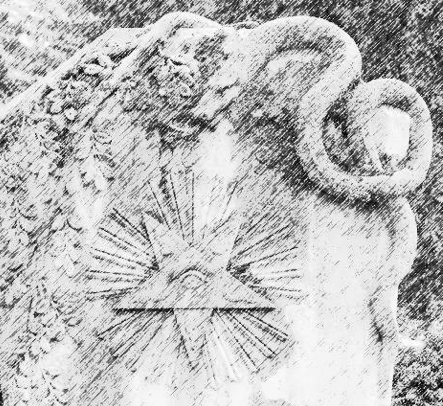SYMBOLS
 RELATED U-STORY: ‘Shape & Symbol’
RELATED U-STORY: ‘Shape & Symbol’
RELATED PROJECTS: ‘SHAPE & SYMBOL’
PHILOSOPHY OF LANGUAGE OR PHILOSOPHY OF SYMBOLS?
Contents
Overview
‘Philosophy of language’ is quit unclear subject and in many cases we have no capacity to define what is related to this field and what is not. This becomes even more confusing when we start to use language to talk about symbols and their meanings and specifically when we talk about symbols as a base for our language.
There are many reasons to maintain interest to this subject from purely academical interest to the practical applications.
Several attempts have been made by this time to put in order and coherence a variety of symbols and their meanings. Result of these works was more or less the same: (1) Gathering the facts over time interval -> (2) Mess of facts in one place -> (3) Attempts to organize facts in a system -> (4) Systems of facts -> (5) Exchanging these systems with other members of society -> (6) Exchanging of ideas about about ‘systems of facts’ in attempt to come with another circle and another mess of facts, and -> (7) all over…
Yet, until now we have no clear classification that can systematize all symbolic elements, their meanings, and provide connection to how our mind creating and using symbols for communication. One could say that there is no clear way to classify all variety of symbols and their meanings that we are giving them. That could be just impossible since the amount of signs and their meanings apparently exceeds the reasonable variety of symbols in different fields of our knowledge. That variety simply could exceed our ability to provide any systematization. Indeed that could be a true unless we appeal to the basic mechanisms of our perception which hardly can be connected with our understanding of language at this time.
Goals:
Our goals here are: (1) present all interesting and valuable classifications of symbols and their meaning,(2) discuss the mechanisms which produced new symbols, (3) discuss the mechanisms that keep symbols active in our everyday life, (4) learn about mechanisms that made symbols disappear from our life.
Approach:
Our attempt here is not to discuss the symbols and their origins and not to come to any conclusion on this subject. We just enthusiastic about putting things in order. Of course, order could be different as well as meanings we are giving to the different signs. To make things reasonably simple we organize all symbols and their known meanings based on classifications that human mind came to at different time points.
We may not be able to reconstruct all historical details for each symbol since the history of their meanings may go way too far and that is not our intent anyway. Here we present symbols based on classifications that have been presented in the past and our main interest is to discuss reasoning of these classifications. Some obviously meaningful classification like numbers (1,2,3,..) or letters (a,b,c,..) produce less interest, however, other classifications like development of symbolic drawing during child development, changes in symbolic perception during different disorders, or classifications of symbols presented by different authors, like Jung’s “Systema Mundi Totius”, can provide a deeper view on neuropsychological mechanisms of communication through the symbols.
Practical applications:
There are few practical applications of this project:
– Most of known works in philosophy of language have been started in between, on a midway of different fieds. For example in Wittgenstein’s work language represented either as a (1) mirror of a real life, so in this case language is our relative truth, or as a (2) tool for the real life and in this case language is our conditional agreement with other people. In both cases we are using language and symbols for communication as a meaningful tools where symbols provide important connections between the meanings.
– Symbols are meaningless by themselves and produce no interest on its own but their meanings produce universal excitement, so attempts to put them in classifications are quite reasonable. We know many examples of such classifications, however, none of them was logically complete. On that way we are not trying to provide any new a solution but to make a ‘space’ where we may feel more comfortable by keeping things in order.
– Currently we are using many different symbols for psychological assessment and on this website we are using them to asses you. That is why we need a reasonable foundation for this work.
Finally, we hope that this approach may represent some interests for everyone who is enjoying to look on language, logic, math, and our communication from the different views.
Classification of Symbols (first try)
This is our first attempt and it is still under development but can give you an idea: